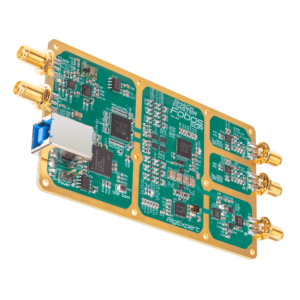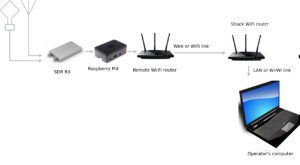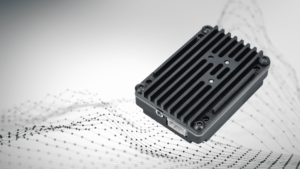RigExpert devices are used for special amateur radio applications. Part 2
SDR technology
RigExpert has announced a new product – the wide-band SDR receiver.

SDR technology is dominating the new amateur radio communication products and it will become more and more sophisticated as time goes by.
The leading amateur radio equipment manufacturers ICOM, YAESU and Electaft make the full or hybrid SDR HF and VHF transceivers.
The Expert Electronics company manufactures the SunSDR line of transceivers that represent the previous SDR transceiver generation requiring the computer and custom control Win7/10 software to operate.
If we’re looking at amateur usage of SDR receivers we see several major applications:
- general coverage band monitoring locally;
- WEBSDR band monitoring through high-speed Internet link;
- setting up local WEBSDR receiving site in a quiet location;
- Spectrum Analyzer;
- SIGINT, ELINT & COMINT
- other
The possible use of RigExpert devices for remote WEBSDR and SIGINT, ELINT & COMINT applications are briefly described in this article.
The usage by amateurs of remote HF and VHF receivers becomes more and more relevant due to a rapidly deteriorating receiving situation in urban areas. The white noise signal levels of S9+ are common nowadays. Cheap filter-less LED lamps, chargers, power supplies, solar panel DC/AC converters, and other pulse devices generate this “tsunami” wave of noise on HF and VHF frequencies. Even on small Pacific islands, as some DXPeditioners have recently found, S9 noise levels are becoming more common.
The only way to escape from this “killer wave” is by installing a remote receiver outside the city in the countryside or finding a quiet location away from the noise source and transmit the digital audio from this SDR receiver to the main operating position via either high-speed Internet or long distance 2.4 GHz Wi-Fi links.
The possible solution is shown below.

SDR RX is connected to Raspberry PI4 (or other single board computer) that processes the digital audio from the receiver received by USB connection.
WEBSDR software is installed in Raspberry PI4 and is accessible by the operator through the wire or Wi-Fi link. If the distance between SDR RX and the operating position is large as in the case of DXPedition when quiet place RX is away from the main camp, directional 2.4 GHz antennas and sometimes bidirectional amplifiers are needed to make the stable and reliable link.
RigExpert manufactures the 2.4GPA Bi-directional Power Amplifier
that greatly increases the link range https://rigexpert.com/products/amplifiers/2-4gpa-bi-directional-power-amplifier/#
2.4GPA has:
- 22dB TX RF gain;
- 10 dB RX gain;
- Automatic TX/RX switching
- ESD Protection
- Low Voltage Operation, 5 V Power Supply allows to use it to power the Raspberry PI4 computer as well.
2.4GPA allows to make 2.4GHz link from Raspberry PI4 to the DXPedition main camp’s router which avoids the need for the Wi-Fi router at the remote RX site.
Ideally, the whole remote receiver installation can be made completely autonomous by using the solar power scheme.
Non-amateur SDR RX use
During the war in Ukraine the SDR use for SIGINT, ELINT & COMINT applications became vital.
SIGINT is the abbreviation for “Signals Intelligence.” SIGINT encompasses all intelligence-gathering methods that involve the interception of signals.
Communications Intelligence, or “COMINT” is a sub-category of SIGINT. COMINT describes communications between people and/or groups. Voice interception, text interception, and signaling channel interception.
Electronic intelligence, or “ELINT” is another sub-category of SIGINT, which is considered “non-communications intelligence-gathering.” ELINT systems primarily use electronic signals to gather intelligence. These systems identify signals by either matching them to known criteria or recording them as possible new, unique, emitters. ELINT data is usually highly classified and therefore, secured.
The third sub-category of SIGINT is FISINT. FISINT stands for Foreign Instrumentation Signals Intelligence. Not to be confused with ELINT, FISINT refers to the collection of signals created by the testing and use of foreign weapons systems, such as foreign aerospace, surface, and subsurface system
Many different kinds of SDR receivers are used in the war zone for the applications listed above. Obviously, the main receiver centers are situated far away from receiving antenna sites which are usually the main target for enemy rockets. This requires to use of very long coaxial cables and correspondingly leads to significant signal loss.
Low Noise receiver Amplifiers or LNAs are used to compensate for losses, but in any case, the need for SDR receivers to have high sensitivity, selectivity, and dynamic range is acute.

